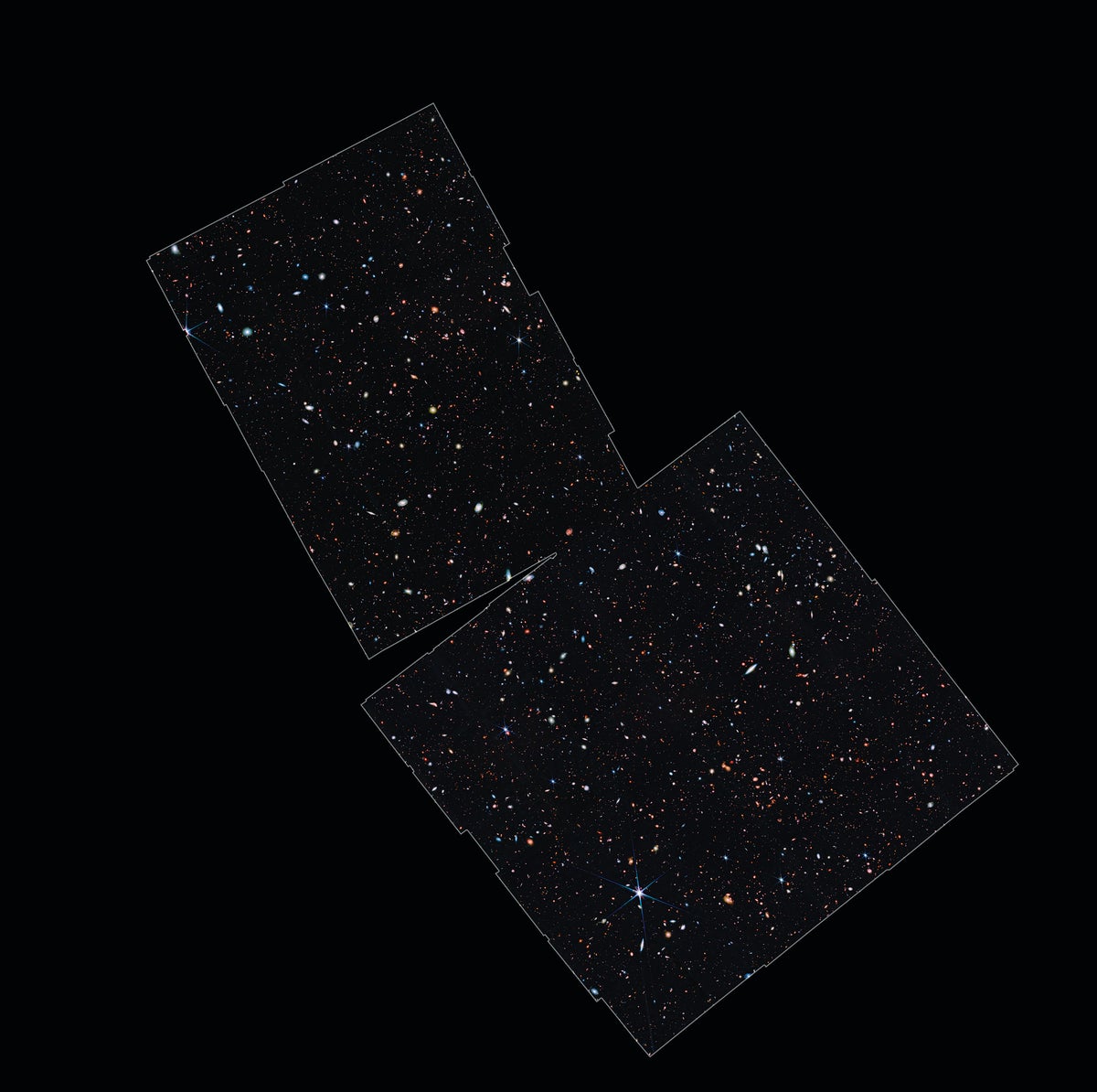Well it found an entire galaxy that we thought shouldn't even exist:
<snip>
Doesn't seem that exaggerated to me if they have to rewrite the entire cosmological model.
New data is one thing, early research papers another, and reporting on either of the previous a whole different thing entirely. Reporting science to the public is generally a messy affair in the best of cases. Reporting from financial and tech sources on science is like asking me to go into depth on a legal issue. The expertise just isn’t there, so just be aware that it’s going to poorly communicate the real impacts here. The links provided here also give air to specific hypotheses that have a fair bit of evidence against them, such as the tired light hypothesis.
That all said, yes, the data is showing that galaxies are forming faster and earlier than we thought possible, and that the dark ages after the universe became transparent are likely shorter than we estimated. But we’re just now probing a period of history that we’ve had no data on up to this point, just educated guesses and simulations based on those guesses and what we know of physics and chemistry. Yet we (as a species) already know that a lot of this is incomplete. As Nanayakkara says in one of your own provided links:
This pushes the boundaries of our current understanding of how galaxies form and evolve, […] The key question now is how they form so fast, very early in the Universe, and what mysterious mechanisms lead to stopping them from forming stars abruptly when the rest of the Universe is doing so
As for “rewriting the entire cosmological model”, I would be surprised. This assumes we are talking specifically of the Lambda-CDM model. Right now, it answers too many questions about the universe today, and the cosmic microwave background to expect a rewrite. That said, it is clearly incomplete.
As a useful analogy, take general relativity and Newtonian gravity. Newtonian gravity is accurate enough to fling probes around the solar system, although it doesn’t account for Mercury’s orbit, and so is clearly incomplete. You can derive Newtonian gravity from relativity, demonstrating it is a special case of general relativity.
Lambda-CDM is much the same IMO as Newtonian gravity. It clearly explains a good number of things we see, but it is also clearly incomplete. JWST is clearly showing us more evidence of that, but also giving us the means to continue piecing things together. Quantum physics underpins modern technology, but is clearly incomplete because it can’t tell us what is happening in a black hole, nor do we have a workable quantum theory of gravity. On top of that, we still have an incomplete understanding of the breaking of symmetries under quantum mechanics, but how these symmetries break, and give us the fundamental forces is important for understanding the big bang event itself.
I've always wondered why it picks up rotation. You have a bunch of gas and dust particles out in space banging into each other, but what makes them start rotating? The seems like order in a sea of chaos.
The skater analogy as dada_dave points out is a key piece of it. Angular momentum must be conserved. But angular momentum is relative to the center of mass of the collapsing dust cloud. So any imbalance in the different directions of the particles that make up the collapsing cloud, however slight, get magnified as the cloud shrinks in size. And as we know from the cosmic background, the universe was fairly smooth, but not perfectly uniform. So you will get rotation during collapse, it’s just a question of what direction emerges.
Now that the cloud has spin, that spin gets picked up by any objects that form as part of it. Stars, planets, etc. This is why almost everything in the solar system orbits and spins in the same direction. Generally, to get the opposite (retrograde), you need some sort of collision or gravitational disturbance, depending on if we are talking about orbit or spin. And on top of that, the same is true at the galactic scale as well, as a cloud collapsing into a star holds some amount of the galaxy’s angular momentum. Mergers can/will introduce retrograde stars to a galaxy though.
Galaxy Zoo did look at the question of if there’s an inherent direction of spin to galaxies, or if it was more random. In a purely chaotic start, you’d expect to see close to 50/50 clockwise/anti-clockwise spin in galaxies (also known as handedness). They didn’t see anything that suggested that the universe itself had a spin direction (anisotropic universe), or that there was a large divergence from 50/50.
https://arxiv.org/abs/0803.3247
Since then, there’s been some analysis that suggests there is a symmetry break here, but this can possibly be explained by underlying symmetry breaks present in quantum mechanics. i.e. It’s still statistically chaotic at the largest scales.
It’s still a sea of chaos, it’s just you need to measure at the right scale to see it.

